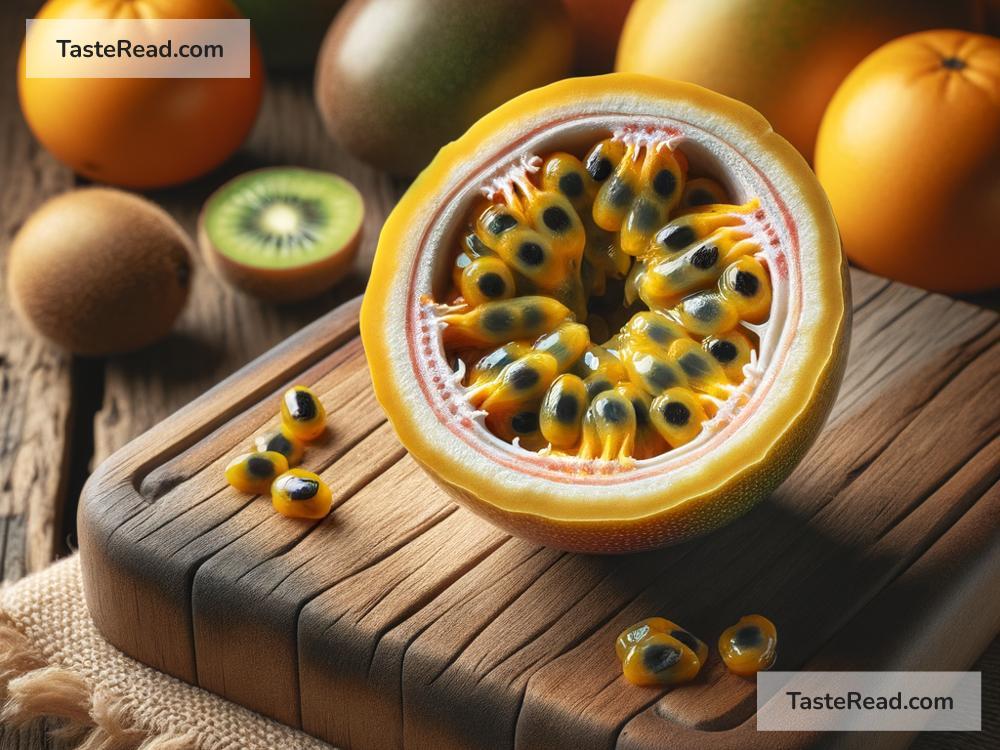Why Fruits Like Passionfruit Have Complex Sweet-Tart Profiles
Fruits are some of nature’s most exciting gifts. They come in different shapes, colors, and flavors, offering a vast range of experiences for our taste buds. While some fruits are straightforwardly sweet (like a ripe banana) or mostly sour (like a lemon), fruits such as passionfruit have a unique, bold combination of sweet and tart flavors that make them stand out. But have you ever wondered why some fruits develop these complex profiles? Let’s dive into the tasty world of fruits, using passionfruit as an example, to understand how these flavors come to life.
The Role of Sugar and Acids in Fruits
When you eat a fruit, the flavors you experience come from several factors, including its natural sugars and acids. Sugars are what make fruits taste sweet, while acids bring tartness or sourness. Passionfruit, for instance, contains both in balanced amounts, giving it its irresistible tangy yet sweet taste.
Fruits make sugars as part of their growth cycle. Plants use sunlight during photosynthesis to produce glucose—a type of sugar that fuels their growth. As the fruit matures, these sugars build up inside, making the fruit sweeter. But at the same time, fruits also develop acids, such as citric acid and malic acid, which create their tartness or sour flavor.
The magic happens when these sugars and acids interact. Passionfruit doesn’t lean too far on the sweet side or the tart side; it strikes a perfect balance between both, which is why it feels so refreshing and flavorful when you bite into it.
Why Do Fruits Need Acids and Sugars?
You might wonder why fruits bother being sweet and tart in the first place. There’s an evolutionary reason behind these flavors. Fruits are meant to attract animals (like birds, bats, and humans), who eat them and help spread their seeds. Sweetness from sugar makes the fruit appealing, while the tartness from acids can add complexity to the taste, making it memorable.
However, not all fruits develop the same flavor profiles. Some focus on being sweet toplease their consumers, while others lean into sourness. Passionfruit sits in the middle of this spectrum—a choice that makes it unique among fruits. This flavor profile helps passionfruit stand out and appeal to a wide range of animals and humans alike.
The Science Behind Passionfruit’s Flavor
To understand why passionfruit tastes like it does, it helps to look at the chemistry behind its flavor. Passionfruit is rich in natural sugars, including glucose and fructose, which are responsible for its sweetness. At the same time, it contains high levels of citric acid, creating its tart edge.
But that’s not all! Passionfruit also contains aromatic compounds—special molecules that influence how we perceive its taste. These compounds contribute fruity, floral, and tropical notes, rounding out the experience of eating passionfruit. In simpler terms, passionfruit doesn’t just taste sweet or sour—it tastes like sunshine in fruit form, with hints of tropical paradise in every bite.
The balance between sweetness and tartness can change depending on the variety of passionfruit, how ripe it is, and even where it was grown. For example, ripe passionfruit is generally sweeter than less ripe ones, since the fruits produce more sugars as they mature. However, even when fully ripe, passionfruit will always maintain some tartness, which is part of its charm.
Why Do We Love Sweet-Tart Fruits?
Humans are naturally drawn to sweet-tart flavors, and fruits like passionfruit are the perfect example of why. These flavors wake up our taste buds like few others can. The sweetness offers comfort and indulgence, while the tartness brings excitement and refreshment. Together, they create a flavor that feels complete—not too sugary, not too sharp.
This sweet-tart balance is also why passionfruit is incredibly versatile. It’s delicious when eaten fresh, but it can also be used in desserts, smoothies, cocktails, or even savory dishes. The complexity of its flavor adds depth to whatever it’s combined with, which is why chefs and home cooks love using passionfruit in their recipes.
How Growing Conditions Affect Flavor Profiles
Interestingly, the environment in which a fruit grows also has an impact on its flavors. Factors like soil, temperature, climate, and sunlight influence how much sugar and acid a fruit produces. For example, passionfruit grown in tropical regions (where it thrives) has a perfect balance of sweetness and tartness because it gets plenty of sunshine to produce sugars while retaining its bright acids.
In addition, how the fruit is handled after being harvested matters. Fruits that ripen on the vine are often sweeter, while those picked early to ship long distances may be more tart. This goes to show that nature’s process plays a huge role in shaping the flavors we love.
Conclusion: Nature’s Flavor Masterpiece
Passionfruit is a remarkable fruit that embodies the beauty of nature’s balancing act. Its complex sweet-tart profile is the result of carefully crafted chemistry—where sugars, acids, and aromatic compounds work together to create something unforgettable.
By understanding how sweetness and tartness interact, you can better appreciate why fruits like passionfruit stand out from the crowd. So, the next time you enjoy a scoop of fresh passionfruit or sip on a passionfruit-flavored drink, take a moment to marvel at how nature combines science and artistry in every bite.


